Text
The California Brown Pelican
Overview and History
The Brown Pelican is the hero in its own real conservation success story! They were listed as a federally endangered species in 1970, endangered in California in 1971. They reached a low of just 466 nests in 19787. Amazingly they recovered and were delisted again in 20095. Today there are estimated to be over 70,680 nesting pairs in California1. Fortunately for them, they remain protected under the Migratory Bird Treaty Act.5
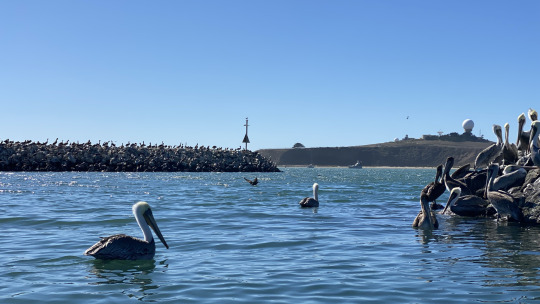
The reason for this dramatic decline in this magnificent bird can be attributed primarily to the pesticide DDT (dichloro-diphenyl-trichloroethane) flowing from mainland sewers into the ocean5,3. This dangerous chemical disrupts the reproductive system of birds, altering their calcium metabolism and resulting in egg shells so thin that they break under the weight of the adult bird when they sit on them5.
DDT was developed in the 1940s as the first of modern synthetic insecticides designed to combat insect-borne human diseases such as Malaria and Typhus6. Due in part to the public outcry from Rachel Carson’s successful early science communication “The Silent Spring” in 1962, DDT was banned by the EPA in 19726. A move now supported by the UN and the WHO6. Worldwide DDT is still used in indoor settings to control the spread of malaria mosquitos, even though DDT has been classified as a human carcinogen.6
Pelicans can live up to forty years old!5 This means that there are probably pelicans alive today that remember when their nests failed and there were a lot less pelicans!
Identification and Appearance
Pelicans are easily identified by their large resplendent beak and stretchy beak pouch that they use as a basket to scoop up prey from the water. They have cute dumpy angular bodies and four webbed toes on their gray-brown legs.4

The earliest fossil record is 30million years old and was found in France. The beak structure and overall morphology of this early Pelican was almost identical to todays bird!3
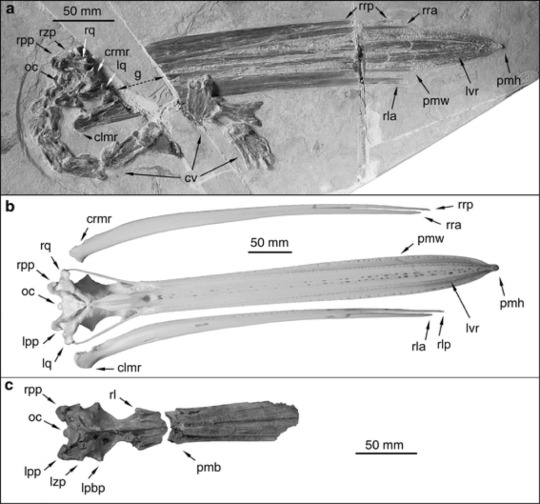
Brown pelicans have a glossy gray to hazelnut brown plumage on their bodies and adults (over 3 years old)3 have white feathers on their necks and bellies. The beak pouch is a pinkish orange. Males and Females look very similar with males being a little larger5 and the male head feathers being stiffer.3
During their breeding season, while they are attempting to woo another pelican; their beak turns pink3. Later in the breeding season the beak resorts back to gray,3 plumage on their heads turns yellow and their beak pouch a deep red. Even the iris of their eyes turns from Yellow-white to a light blue!5

There are 5 subspecies3 of Brown Pelican, these look very similar with slight differences in breeding plumage5. Even though they look alike, the subspecies are genetically distinct.3
Brown Pelicans weigh about 8lb (similar to a heavy human baby at birth). They are a little over 4ft in length (just over the height of my grandmother) their wingspan can be up to 6.5ft! (The size of a tall human)5
Range
Brown Pelicans have a wide range throughout coastal north and Central America, with the occasional juvenile wandering inland a little lost.
However, the range of the California subspecies of the brown pelican is permanently in the coastal marine waters of the pacific, from British Columbia to Nayarit in Mexico5 and sometimes even Guatemala.3

Habitat
California brown pelicans are big fans of the ocean, they can often be seen flying over it or sitting on it. They also enjoy hanging out on rocks.1,2
You usually won’t find Brown Pelicans more than 5 miles from the coast (either inland or on the ocean)3; but incredibly, they can travel a distance of 30-40 miles if they feel like it!5,1 There is however, a large group of Brown Pelicans who have decided the Salton Sea inland lake in California is actually a pretty nice place to hang.4
A great place to see them locally in El Granada is kayaking out of the Half Moon Bay Kayak company past the rocky harbor walls where (depending on time of day or tides or just sheer luck) they will be gathering in the dozens.
Feeding
A pelican’s beak can hold over 3 gallons of water.5 Though obviously they would prefer it was 3 gallons of fish! They have the largest beak pouch of any bird worldwide.5
Brown Pelicans were the only pelican to do dive/plunge feeding5 until the Peruvian subspecies was declared a separate species3.
Around our area you’ll find White Pelicans inland and Brown Pelicans on the coast. I've personally not seen many areas with both brown and White Pelicans except estuaries like Moss Landing.
They are champion divers and catch the majority of their prey by diving from a great height. Although on average these dives are usually between 10 and 30 ft, they can in-fact, dive from a height of 100ft5 which is over seven building stories high!
The deeper the prey, the higher they dive. A dive from these astonishing heights can reach and stun fish 6ft deep.5 They even have their own padding, air sacs5 in their bodies to protect them from this sudden impact with the ocean. These portable cushions are also great for helping them float!3
Another way they catch food is to sit on the water watching for the tell-tale shimmer of their favorite snacks and doing almost a little hoppy dive to catch them.5
Once a tasty mouthful of fishy water has been obtained, the pelican leans forward to filter out the water from its pouch. It then flicks it’s head backwards to swallow the fish.5,1 Pelicans can eat 4lb of fish a day!5 They can also process any extra salt water they swallow using specialized glands.3
Favorite foods of the California Brown Pelican are the Northern Anchovy, the Pacific Sardine and the Pacific Mackerel5. They also often eat Crustaceans, and Smelt.1,3 They even occasionally eat Amphibians, eggs and nestlings of rival species and other pelicans.3 Scientists estimate that in Southern California Pelicans eat 1% of the total anchovy biomass!5,1
One major threat to the Brown Pelican is the effect of overfishing, particularly of sardines, and the disturbances in the food chain due to climate change.3 So next time someone offers you a sardine, say no and save a pelican!
Behavior
The Brown Pelican is an outgoing sociable creature and is happiest when chilling in mixed flocks.3 A common sight off the coast is a squadron of Brown Pelicans flying and gliding in single file or in a perfect V shape, often really close to the water's surface or using updrafts, but they can also fly up to 70ft high to keep a beady lookout for a tasty moursal.5,2,3,4
You can also find pelicans sitting in often very large groups on the surface of the ocean near to shore. They seem to be flapping their wings on the water, local speculation on this behavior includes “shaking off parasites”. The effect however, of a number of pelicans flip flapping on the water may be a similar technique to that of dolphins and bubble feeding, to corral fish together to make scooping them up for dinner easier.3
Pelicans are pretty smart though, and will sometimes approach fisherfolk for handouts to save the effort of catching their dinner themselves.1,2
Monogamous for the breeding season, the Brown Pelican likes to keep its options open and doesn’t mate for life.3 The male finds a nice spot for a nest and waggles it’s head elaborately to attract a female. Ladies choose their mates based on this display and their choice of real estate.3 To indicate her approval, she will engage in a dance with the male, of head bowing and swaying and whispering sweet nothings in the form of low “raaa” noises.3
When the California Brown Pelican isn’t breeding, they can migrate north as far up as British Columbia. Some of the more inexperienced juveniles will get lost and wander inland. Particularly in south California and Mexico.1
Nesting and reproduction
The only breeding colonies of California Brown Pelicans in the western United States are in Channel Islands National Park, on West Anacapa island and now also the Santa Barbara Island (since 1975).5 However, 90% of California Brown Pelicans breed off the coast of Mexico.5
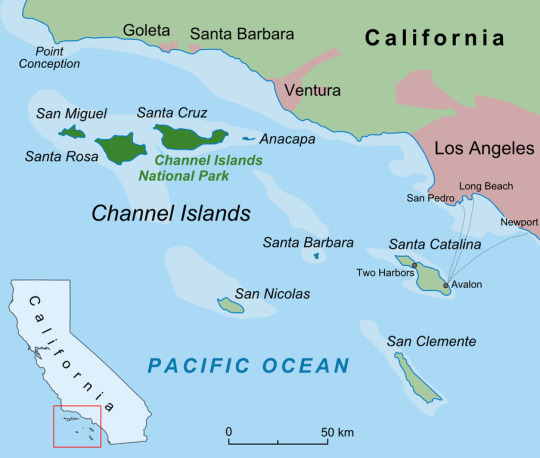
Brown Pelicans currently breed between January & October with most eggs being laid in March. They have one brood1,3. Historically their breeding season was much shorter, March to early fall5. I’m wondering if this change has to do with the increase in pelican population. I would imagine that if there are a lot less pelicans it would make sense to time your nesting season to be shorter to make sure everyone was in the right place at the right time.
The nests are in breeding colonies on islands unpopulated by sneaky mammal predators and in places where humans don’t live permanently5,4. Pelicans build large nests (because they themselves are large birds) on the ground or in vegetation or trees.5,3 Nests are built by the lady pelican with material gathered by their partner.1
The nests themselves can be quite varied, depending on where they build them and how much effort they can be bothered to put in. They range from a simple scrape in the soil, to a heap of debris with a depression on the top or a large elaborate stick nest in a tree.1
Adults share incubation eggs of the 2-3 oval eggs that they lay.5,3,1 Incubation takes about 28-30 days3, over which time the bright chalky white eggs become stained the color of the nest.1
Not many animals can stomach eating an adult pelican, Bald Eagles, Sea Lions and Sharks being the exception.3 Eggs and babies however are a common snack food of many creatures, including gulls, dogs, raccoons and even bobcats.3
The success of the brood depends on the availability of their primary food source during the breeding season: northern anchovies (Engraulis mordax) and Pacific sardines (Sagax sarinops)5. Coastal upwelling of cool nutrient rich water near the Channel Islands is essential for these prey animals to thrive. I speculate that another reason their breeding duration could have changed could be related to climate change / human fishing impact on Anchovies and Sardines.
Pelicans are very sensitive to being bothered by people when they are nesting, including lights and noise. In 1999, a large increase in nighttime squid fishing boats seemed to affect a higher rate of nest abandonment and chick mortality than average; these numbers couldn’t be explained by any other environmental factor.5
Baby pelicans are pink3 naked, helpless and completely dependent on their parents for feeding and care for the first 3-4 weeks of their lives.5
At around 5 weeks old, now gray-black in color;3 the baby birds in ground colonies grow into rowdy teenagers, sneaking out of their nests to gather in groups (known as pods3) while their parents are out looking for food1. When the parents return they can recognise their own young.1 Tree nests being a little more hazardous, the babies tend to stay in the nests for up to 9 weeks before exploring the outside world and discovering branches.1
They fledge at around 9-13 weeks5,1, although just like humans taking laundry home to their parents from university, the parents continue to feed the babies for some time once they fledge (8-10 months).1,3
Fledglings are more likely to survive if they are the oldest child, the average rate of success based on who hatched first drops from 100% to 6% by the third chick3. It is a mammoth mission to figure out feeding themselves so they rely a lot on their reserves initially.5 The chicks that do make it, grow up to be the glorious bird we all know and love.
Fun facts!
They have the largest beak of any bird in the world! It can hold 3 gallons.
90% of California Brown Pelicans breed in Mexico.
The only breeding colonies in the United States of California Brown Pelicans are in the Channel Islands.
They can live up to 40 years old.
They can dive from up to 100ft (7stories high) and stun fish 6ft deep.
Sources
Audubon https://www.audubon.org/field-guide/bird/brown-pelican
EBird https://ebird.org/species/brnpel
Wikipedia https://en.m.wikipedia.org/wiki/Brown_pelican and https://en.m.wikipedia.org/wiki/Pelican
All about birds https://www.allaboutbirds.org/guide/Brown_Pelican/id
National park service https://www.nps.gov/chis/learn/nature/brown-pelican.htm
EPA history of DDT https://www.epa.gov/ingredients-used-pesticide-products/ddt-brief-history-and-status
Moss Landing Marine Labs https://twitter.com/mlmlmarinesci/status/1493651506473869313?s=21
Esasuccess.org https://www.esasuccess.org/birds.shtml
Image sources
Pelicans in Pillar Point harbour source: Natalie Downe
Pelican ID images source: Simon Willison
Range map source iNaturalist
Channel islands map
Essay written by Natalie Downe as an assignment for the Fitzgerald Marine Reserve Docent/Guide class.
1 note
·
View note
Video
vimeo
Murder She Wrote credits supercut from natbat on Vimeo.
All the clips from all the opening credits of twelve seasons of murder she wrote
0 notes
Text
What I’ve been up to recently
Courses I’ve taken
In 2019/2020 I took these Stanford classes as a JSK fellowship affiliate:
Ornithology (BIO221)
Conservation photography (BIO53)
Evolution (BIO85)
Ecology and Evolution of Animal Behaviour (BIO245)
Applied Ecology at Jasper Ridge preserve (BIO205)
Geology, Landscapes and Tectonics of the SF Bay Area (GEOLSCI42)
Concepts in Environmental communications (EARTHSYS 291)
Ecology (BIO81)
Introduction to Earth Systems (EARTHSYS10)
Other classes and trainings I have taken during this time:
Weekly Spanish classes since March 2019
Pat Brown’s 3 day residential desert bat class in July 2019 in the Mojave Desert
Drones in Conservation workshop, week long class by The Wildlife Society in April 2019.
Defensive driving class March 2019
Advanced animal care training with the Marine Mammal Center 2016, 2017, 2018, 2019, 2020
Marine Mammal Center advanced education and tour guide training Feb 2019 (also many other in-the job advanced education training courses)
Elephant seal progression trading with the Marine Mammal Center, January 2019
Giving psychological first aid in a disaster, with SF fire department and NERT, Jan 2019
Two day Marine Mammal Center docent and education training, October 2018
3 day residential class on nudibranchs with Alison Young and Dr Rebecca Johnson, the California Acadamy of Sciences and the Jepson Herbarium in Half Moon Bay, California, July 2018
Week long naturalist kayaking trip in Baja, Mexico to learn about whales, Feb 2018
Two day ham radio class with the San Francisco Radio Club, June 2017
Week-long residential bat acoustics workshop (using Sonobat) by Dr. Joe Szewczak, Leila S. Harris and Jill Carpenter and the Wildlife Society. June 2017 in the San Jacinto Mountains, California.
California naturalist residential course in 2017
The Wildlife Society day/long bats and white nose syndrome workshop
Bat banding radio tagging class with Dave Johnston in September 2017
NERT graduate class in Pet disaster response and first aid, Feb 2017
NERT graduate class in Emergancy communications, Feb 2017
Neighborhood Emergency Response Training with the San Francisco Fire Department (NERT) January 2017
Marine Mammal Center animal care and advanced animal care, and elephant seal progression training.
Conferences I went to during this time:
Science Hackday October 2019, 2018 and 2017
The Wildlife Society and American Fisheries Society annual conference in Cleveland Ohio September 2019
California Bat Working Group summit Feb 2019 and Feb 2018
Wildlife Conservation Network Spring and Fall Expo 2018
California Naturalist Regional Rendezvous where I have a talk on white nose syndrome in bats
The Wildlife Society Annual Conference in New Mexico September 2017
Wildlife Conservation Network Spring Expo 2017
Pybay Python regional conference August 2016
Naturalist training and Bat experience
I qualified as a California Naturalist in 2017 through through the University of a California Agricultural College and Camp Ocean Pines. My final project was a bat walk and a presentation about bats. This was such a huge success that I was invited back to the 2018 class to give a paid talk on bats and guided bat detecting walk.
I put this training to good use encouraging friends and organising many trips to help spark that passion for nature (bats and otherwise!). I believe in getting people on that first rung of the stewardship ladder where to care and protect for the environment you first have to be exposed and get interested in nature.
I volunteer with the California Acadamy of Sciences on occasion to help perform biodiversity analysis on the tidepool reef at Pillar point in Half moon bay under the direction of Alison Young and Rebecca Johnson. I have also taken their 3 day residential class on Nudibranchs with the Jepson Herbarium.
I collaborated with leaders in the California Bat Working Group to specify, design and build a website for the group and the logo/branding:
https://www.calbatwg.org
Simon and I also built this Bat website with iNaturalist data to help people realise that awesome bats are around them everywhere!
https://www.batsnearme.com
I attended the residential workshop put on by The Wildlife Society and run by Dr. Joe Szewczak, Leila S. Harris and Jill Carpenter in the San Jacinto mountains, June 2017. We did a deep dive into the biomechanical process of echolocation, diffeeent species of bats, the physics of sound and in teams of 4 we designed, ran and analysed the results of a survey with a Sonobat detector. Paying special attention to where we placed the sensor, what types of bats we thought we might get then learning to analyse the sonogram waveforms for heuristic patterns to identify individual species of bat. We did some mist netting, I helped get a tangled June bug successfully out of the net.
At Pat Brown’s 3 day residential Desert bat class in the Mojave Desert, 2019, I got my first bat handling experience under supervision of Jill Carpenter. I assisted with the construction and breakdown of the netting sites. Record keeping and I held and helped measure several California Myotis and helped get a Canyon bat and two Palid bats out of the net. (I have a recent Rabies Titer)
In February 2020 I had the opportunity to volunteer for Gabe Reyes with the USGS mist netting bats in Marin. I managed the survey record keeping, helped with construction and breakdown of 6 mist nets. I handled some California Myotis and helped measure weights and wingspan, assisted with the removal of one bat from a net and helped release a few after we had surveyed and radio tagged them. More winter survey dates were planned but the global Coronavirus pandemic stepped in the way.
I took a week long drones in conservation workshop with the Wildlife Society where learned to plan routes, fly drones, environmental and wildlife considerations and regulations and how to analyse and collate imagery and geo reference to a map using ArcGIS. We also used ArcGIS for our project in which find a number of hidden plastic turkeys with drone imagery from a route that we planned and executed in teams of 3.
Science communication and Docenting/Guide experience
I have been working with the Scientific community on twitter to support and boost the engagement in science communication games (eg #cougarOrNot / #CrowOrNo #barkingUpATree etc).
I used Python to automate a Twitter bot that retweets science communication games:
https://natbat.github.io/scicomm-calendar/
I have also worked extensively with the iNaturalist API. Simon and I just launched MVP of the site we’ve been working on for the last few days. It’s a site to get people interested in Tidepooling and help figure out the best low tides to visit in the next month that are in daylight hours.
https://www.rockybeaches.com/us/pillar-point
Another site we launched was for the Super Bowl / Superb Owl
https://www.owlsnearme.com
I am working to publish and create a library of nature videos for the Bay Area.
https://m.youtube.com/channel/UCu_N3UP2o8JdnNmGAhYRijQ
Here is the educational video of me talking about how 50% of all Californian Sealions are born on June 15th and the rest are born that week:
https://youtu.be/Z2B_cbp34D8
youtube
My educational video on redwood trees:
https://youtu.be/3DzN2De9ANc
youtube
I have been a volunteer Docent/Guide at the Marine Mammal Center for a year, I have done nearly 100 hours of Docenting. This involved customer engagement through storytelling to help spark people’s passion about marine mammals and lead them into behavioural change to save the oceans and the planet. (See below for more details and recommendations I have received on this role). I have also taken the tour guide training and was in the process of graduating as a tour guide when the pandemic temporarily closed the Center.
I took part in Science Hackday 2017, 2018 and 2019.
Marine Mammal experience
I have been volunteering at The Marine Mammal Center in Marin, California on the animal care crew (Tuesday daytime topside) more details on this can be found in the volunteering section of my LinkedIn profile.
In summary this consisted of in-pen experience with marine mammals such as Elephant Seals, Northern & Guadalupe Fur Seals, California & Stellar Sea lions. Working as part of a team to follow protocols (such as tube feeding), do detail oriented work and care for the animals in a high stress, high risk environment.
I trained in ‘Elephant Seal progression’ which involved direct interaction with young & yearling Elephant seals 'fish school' monitoring their behaviour and teaching them to activate their instincts to recognise fish as food & overcome gag reflex to swallow and eat fish on the pen floor & in the pool. I spent several seasons as part of the Fish school team. Part of this work required detailed charting of observations and behaviours for continuity between teams and vet-staff to be informed.
The Fish kitchen experience (both participating in and running fish kitchen) involved, organising orders, labels and buckets, measuring quantities, performing quality assurance & adding medication to fish, making measuring and drawing up fish mash and electrolytes.
I ran the fish kitchen operation on several occasions, organising, prioritising and managing teams to take the fish to the pens, taking reports of the feeds/observations and charting this for vet staff.
I helped release Elephant Seals to the wild which is an incredibly magical experience knowing you have helped these animals recover. I have participated as part of the release team on two releases at Chimney rock which is a different sort of high-stress/risk environment because you are out in the wild and there are adult elephant seals around on the beach.
I've taken the Animal care class & the Advanced animal care class yearly and the Elephant Seal Progression class.
Neighborhood campaigns and local politics
I have been campaigning with some friends and neighbors to save trees in Hayes Valley, this included putting out petitions, posters, social media campaigns, surveys, writing speeches, and speaking out at public meeting city hearings and appeals (both for hayes valley and other neighborhoods) and negotiating for terms of replacement trees directly with the Bureau of Urban Forestry.
For more information on our campaign’s achievements: https://blog.natbat.net/post/623649015818485760/hayes-valley-trees
Ham Radio and Disaster response experience
I trained with the SF fire department Neighborhood Emergancy Response Team (NERT predecessor to the CERT programs elsewhere in California) in 2017. This was a 3 day program with a license for 2 years and I have renewed again in 2019. I have attended a NERT Drill and have done three graduate NERT classes, psychological first aid, pet preparedness and first aid and Emergency Communications.
I took a Ham Radio class with the SF Ham Radio Club in June 2017. I arranged study groups with some friends. I took the exam for the Technical License and passed first time with a score of 34/35. In September 2017 I passed my General License (Intermediate) exam. My callsign is KM6LCB.
I volunteered at the San Francisco Marathon on the communications team on the part of the route that blocked in the SF blood bank. I’ve taken part in two treasure hunt style simplex competitions with friends, run by a friend who used to write the MIT treasure hunt.
Expeditions
Simon and I went on a week long kyacking and camping expedition in Baja Mexico in with Naturalists and Guides from Seatrek to find Blue and Grey whales in n Feb 2019
I planned and organized a 4 week expedition to Madagascar in September 2019. I wanted to see as many Lemurs in the wild as possible so my plan took me to a distribution of biodiversity hotspots all over the country (some of which were very hard to get to and involved chartering boat or hiking for miles).
I worked with an independant local guide and together we booked accomodations and arranged logistics around constraints of time, budget route and amount of lemurs. We saw 28 (of the hundred or so extant) different species of Lemur in the wild. Hiked twice a day including a lot of night hikes to see bats and nocturnal lemurs and fosa fusana. I learned enough Malagasy to communicate basic needs and facts about animals!
0 notes
Text
Hayes Valley trees
Department of public works have a proposed replacement plan you might like to see:
http://bit.ly/tree-plan-hayes-valley
In short, lots of lovely flowering trees that support local ecology like birds, bees and butterflies and evergreen trees to continuously scrub toxins out of the air and improve our air quality all year round.
Any questions or comments please email Susan Cieutat susan AT sfdonors.com
Some background
Hi all! You will likely by now have heard about or seen some trees coming down in the neighbourhood. These were Ficus trees that the city wanted to remove because of concerns about branch failures on some of the larger trees.
Info as to why they plan to do this here:
https://sfpublicworks.org/ficustrees
Tons of people either emailed or showed up at the initial protest hearing and voiced their opinions, so thanks to everyone who did that! Susan Cieutat and Josh Klipp filed official appeals after that and more people turned up in support, overall nearly a hundred people have taken part in this process! It’s been a really great turn out.
Why did we protest
The main things being protested were:
SF has one of the worst urban canopies of any city in the United States, a blanket rule to remove all ficus trees all in a short space of time would exacerbate matters.
Lots of little trees planted as replacements in our neighbourhood have been vandalised and have died, we wanted to give the replacements as big of a chance as we could.
We wanted to keep as many non-dangerous mature trees as we could for shade with climate change and increasing local temperatures and for carbon sequestration to fight climate change.
To have removals take place with minimal impact to the local wildlife of birds and bats. And for replacement trees to have ecological benefits for those species. San Francisco is part of the incredibly important great Pacific Flyway where lots of birds use our urban canopy as a stopover on the long migrations North and south.
To get planting replacement trees committed to and have community input into this.
What happened as a result
It’s been a long year or so of discussions, protests and appeals and we wanted to update you on how things went through both the initial community protest and the appeals process.
The initial proposal by the Department of Public Works (DPW) was for 39 trees to be removed, the protests of the community were heard and the Bureau of Urban Forestry (BUF is a Department of DPW) went back and looked again at the individual trees and decided we could keep some by heavily pruning them. As a result we are only loosing 28 - there may be plans to remove more in five or so years but that will be a separate proposal later down the line. - This is a 30% reduction in the amount of trees scheduled for removal, a significant slowdown in the reduction of our urban canopy.
A passionate appeal by Jacky led to her favourite tree outside what used to be Cafe La Vie, being one of the ones saved.
With regards for replacement trees, the mandate from the board of appeals was to have a planting plan in place that had community input, before removal of the trees. While this didn’t happen exactly because of a request from hvna to speed up the removal process in advance of eateries re-opening, there is a plan in rough formation now. And thanks to everyone who filled out the survey on replacement trees! (More on this in a moment)
With replacement trees we tied them to a 3 month replanting schedule from the day the tree is removed. This, by BUF/DPW standards is a super fast timeline and it also guarantees that budget is set aside for the replacements whereas it might have been lost in the shuffle and we could have ended up with no replacements.
To help the little trees get their best start in life, we got a mandate from the board of appeals that instead of the usual small 15 gallon trees this had to be increased to a 24” box, which represents a few more years of growth and hopefully more robust trees!
There is budget set aside as a commitment to watering the replacements for 3 years which should be enough to establish them such that they can support themselves.
BUF have been planting up some of the empty basins in the neighbourhood and are continuing to plant more and considering the possibility of making more basins.
Tree replacement plan
Thanks again to everyone who filled in the survey Josh posted in this fb group and John Nulty sent out on his mailing list. There were over 60 respondents!
The most asked for tree was the Jacaranda tree. After that magnolias were popular and overall a strong preference for flowering trees.
(While a few people in the comments section requested Cherry blossom, it has been observed by BUF that they don’t grow well in San Francisco as a street tree, have a look at the ones in Japan Town, they are old but still very tiny)
There was a preference toward evergreen trees over deciduous with a preference toward clumps of the same tree on a street. (Deciduous means they drop their leaves seasonally and evergreen means they keep their leaves all year round)
Evergreen trees are great because they filter the air all year round, scrubbing the air and improving our air quality!
With replacements BUF is limited to what is available in the larger 24” box size and they have been working very hard and diligently in trying to meet the desires of the neighbourhood from the survey, health considerations for the tree, availability of trees in the nursery and the requirements of the individual basins (for example choosing shorter trees under power / muni lines etc)
All the replacement species are designed to be drought tolerant once established, as we seem to have little sky-water over here (I’m from England, we have too much of it over there!)
Here is a map of the plan from BUF / DPW as to which trees are due to be replaced and with what:
bit.ly/tree-plan-hayes-valley
The key to the map is looking at the colour of the little tree markers:
Pale green = Ficus trees that were proposed for removal but are staying.
Purple = Jacarunda trees
Blue = California Lilac / Ceanothus the ‘Ray Hartman’ subspecies
Dark red = Catalina Ironwood
Dark green = Magnolia (st Mary’s variety)
Black = being removed but because of where it is a replacement is not possible


A little about the replacement species:
JACARUNDA
Flowering - Deciduous - Not California native
Beautiful Purple flowering tree, can grow quite tall and keeps its flowers for a long time during spring and summer once the tree is mature.
As someone with hayfever, personally I had reservations about flowering trees but it turns out that Jacarunda is pollinated by bees, not wind, so it doesn’t need to spread its pollen far and wide which is great for us summer-snifflers!
There is one flowering on Grove st between Laguna and Octavia if you’d like to see one in action right now.
Fun fact: the bloom in Pretoria, Australia coincides with the year-end exams at the University of Pretoria, legend has it there that if a flower from a jacaranda drops on a student's head, the student will pass all their exams.
https://www.thespruce.com/growing-jacaranda-mimosifolia-3269356


CALIFORNIA LILAC
Flowering - Evergreen - California native
This is a pretty blue flowering tree that is really great for our native pollinators! Butterflies, Bees and humming birds love them!
It’s fast growing but doesn’t get very big so it’s a good tree for places that have overhead power lines. They are also known as ‘nitrogen fixers’ which means they can help keep the soil healthy.
Fun fact: The seeds of this plant can lie dormant for hundreds of years and are typically dependent on forest fires to trigger germination of their seeds!
https://www.gardenia.net/plant-variety/ceanothus-california-lilac
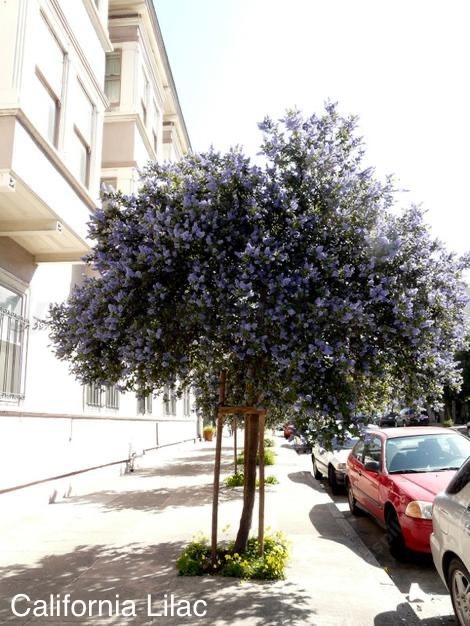
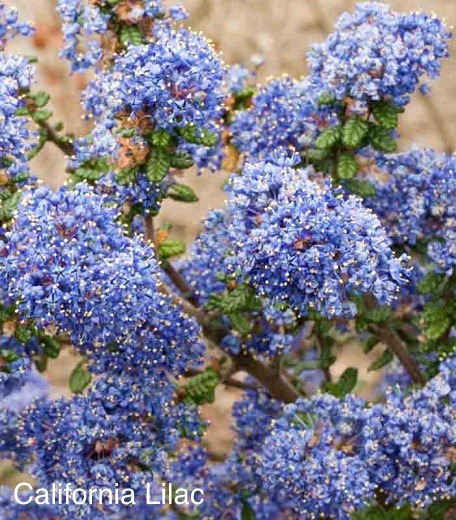
CATALINA IRONWOOD
Lyonothamnus floribundus
Flowering - Evergreen - California native
This tree can grow up to about 15 metres (nearly 50 ft) and has glossy dark green leaves and small woolly white flowers.
Planting trees native to the state is a great way to support local wildlife, even though this tree is native to the islands around Catalina and not to San Francisco specifically, it will be great for nesting birds and native bees and other wildlife that live in both places.
Fun Fact: natural populations of this tree grow in distinct groves. Each grove contains up to several hundred genetically identical clones!
https://www.fuf.net/tree/fernleaf-catalina-ironwood/


MAGNOLIA
Flowering - Evergreen - Not California native
Magnolias have lovely thick dark glossy leaves and produce really good shade. They have big white fragrant flowers. It’s slow growing but long lasting and has a lovely big oval canopy once mature
The St Mary’s magnolia is a medium sized tree and it sequesters a good amount of carbon
Fun fact: San Francisco botanical gardens has (when it’s open) over 200 different species of Magnolia, one of the best collections of its kind in the world. When they bloom in late-winter / early spring you can take a tour round the gardens with their magnolia curator!
https://www.sfbg.org/magnolias
https://www.fuf.net/tree/southern-magnolia/


Here’s a link to that replacement tree plan again if you want to look at it in google maps:
bit.ly/tree-plan-hayes-valley
The above is a shortened link to:
https://www.google.com/maps/d/edit?mid=1ZOdYbNxJP7-dsB92GIp-LZGzQ9w487cU&usp=sharing
Any questions or comments please email Susan Cieutat susan AT sfdonors.com
0 notes
Video
vimeo
Behind me are dozens of California Sea Lions. I’m in San Francisco opposite the famous pier 39 where for over 30 years this floating marina has been the batchelor pad home to nearly 600 Male and juvenile sea lions. You may be wondering why I’m wearing a tiny hat, well I’ve come to wish Happy Birthday to half of them! That’s right, 50% of all California Sea Lions are born today, on June 15th, and the rest are mostly born this week! The marina here is a lot emptier than usual because at this time of year, the males have left to patrol the breeding grounds on islands off the coast of southern California. They are hoping to mate with the females just a couple of weeks after they last gave birth. The female sea lions carry their babies for 9 months, but after mating, they can delay implantation of the embryo for up to 3 months. Scientists believe they use the length of day to trigger their coordinated delayed implantation. That's why they all share the same birthday! You can find California Sea Lions from Alaska all the way down to Mexico and along the gulf of California, and with such a wide geographical range, this tightly synchronised breeding increases the likelihood that they’ll all be in the same place at the same time. You can see here that the larger ones have tufty blond hairdos, these are the older males, their head gets lighter and their skull more pronounced as they get older. The males can weigh up to 1000lb and can move up to 5mph on land, they are smart but can be dangerous so you don’t want to get too close. A question I get asked a lot is how do you tell the difference between seals and sea lions, the easiest way to remember is that seals are like sausages with tiny wings, whereas Sea Lions have long flippers they can sit up and run on, they also have cute little sticky out ears compared to the seal’s ear holes, so just remember, seal sausages don’t have ears! Like a lot of marine animals, Sea Lions are suffering from malnutrition due to the effects of our over fishing and harmful fishing practices. One thing you can do to help our flippered friends is to ask some questions when you are buying seafood is to ask not only what type of fish it is, but also where it is from, and how it was fished. The Monterey bay aquarium has a great app called “seafood watch“ than can help you make responsible decisions, together, if we all ask these questions, we will spread the word that we care about sustainable seafood and saving the rich tapestry of marine life like these wonderful sea lions. Shown in video: * Range map via iNaturalist https://www.inaturalist.org/observations?place_id=any&taxon_id=41740 * Seafood watch guide by Monterey Bay Aquarium https://www.seafoodwatch.org Sources: * https://www.marinemammalcenter.org/education/marine-mammal-information/pinnipeds/california-sea-lion/ * https://www.afsc.noaa.gov/nmml/education/pinnipeds/california.php * https://www.marinemammalcenter.org/education/april-fools-day/when-are-california-sea-lion-pups-born.html * https://en.m.wikipedia.org/wiki/California_sea_lion * https://www.marinemammalcenter.org/about-us/News-Room/2015-news-archives/sea-lion-crisis.html
0 notes
Video
vimeo
The hot rainless summer days in the west coast of the USA bring with them the cool ocean moisture pulled inland forming thick fog. That fog is essential for the redwood ecosystem and the redwood trees themselves. Coastal Redwoods - sequoia sempervirens - grow all along the Pacific coast from central California up to Oregon, including here in Stern Grove, San Francisco and in Jasper Ridge. They grow really tall and wide, and the oldest ones around today have been alive since before the time of Christ - around 2200 years. They provide essential ecosystem services including filtering trillions of gallons of water every year. They capture 13-45% of their own water needs from the fog, and through condensation on their wide, flat needles dropping down provide all of these understory plants with 2/3rds of the water that they need. When redwoods are lost, the understory also loses access to water and even the streams run emptier. This fog, captured by the redwoods, also has the advantage of decreasing the flammability of the land. Coastal redwoods are the tallest trees in the world, and can grow up to 360ft (110m) which is about 32 stories high - nearly half the height of the Transamerica Pyramid in San Francisco. The bark itself can be at least a foot thick in mature trees with a high water content and tannins that act as a natural flame retardant. The tannins also give them their red color. The trees themselves provide valuable habitat for lots of plants and animals. Because of their huge size and complex crown, all sorts of plants grow on the branches - relying solely on the redwoods for nutrients and water. These are known as epiphytes. Because redwoods are so immense these can even be fully grown trees! The highest epiphytic tree in the world is a California Bay which started growing at 322 feet, about 29 stories above the ground! Arguably the most abundant and important epiphytes are the ferns, specifically the leather fern - Polypodium scouleri. These fern mats in the canopies store and absorb water like a sponge, providing vital microhabitats for many creatures. For example, the clouded Salamander Aneides vagrans which thrives in these moist environments because they have no lungs and breathe through their skin. They have all sorts of adaptations for existing in the canopies, including a prehensile tail, long legs and sticky feet. Many varieties of birds, bugs and bats live in redwood trees - under bark, in branches or in cavities. At Jasper Ridge, one time in the winter, our group was eagerly observed by a great horned owl. These valuable redwood ecosystems are under threat. 96% of coastal redwoods have been logged for timber in the past 200 years. Just 45% of the remaining coastal redwoods are in protected areas, and the rest remain at risk of logging. Redwood forests store at least three times as much carbon as any other kind of forest, and because they are so long-lived this longer-term carbon storage is an important resource in the planet’s fight against climate change. Sources * https://undark.org/2019/12/16/redwoods-burning-logging/ * http://www.ecology.info/redwood.htm * https://sempervirens.org/redwoods-and-wildfires/
0 notes
Text
Californian Bats and how the West Coast can prepare for the deadly white-nose syndrome epidemic
Bats, or as I prefer to call them “sky puppies” are adorable, wonderful and play an essential role in ecology. But they are facing a significant new threat. White-nose syndrome is a fungal disease that is spreading at an alarmingly fast pace, affecting colonies of hibernating bats. It has killed 90% of some species in the USA, literally millions of bats since its introduction from Europe in 2006. It started in New York, then spread to the central states and with a recent outbreak as far west as Washington it’s imperative that we prepare in California.

Ecology and Importance of bats
Bats make up 20-25% of all known living species of mammals (1,240+ out of 5,400+), and as the primary predators of night-flying insects they play an important role in controlling bug populations.
They enjoy eating Mosquitos, which helps reduce the spread of mosquito-based diseases such as West Nile Virus and Zika. They also eat bugs like the Stink Beetle, Cotton Ear Worm moth and the cotton Bullworm moth that are hugely damaging to crops and they can reduce fungal infections of corn, thus saving Farmers billions of dollars in pesticides in the US alone.
About a third of bat species worldwide are fruit or nectar feeding. These bats pollinate numerous plants and disperse seeds in their fertile poop. Plants that benefit from bat pollination worldwide include about 450 commercial species such as avocado, figs, dates, peaches and almonds. Insect feeders such as the Pallid bat, can also be important for pollination. Even the Giant cactus and Agave — for tequila — is pollinated by bats!
We have about 20 species of bat here in California, and all except two (Mexican long tongue and CA leaf nosed bat) eat insects. The pallid bat changes it’s diet depending on habitat and is even immune to scorpion venom and will happily munch on scorpions as a snack.
White-nose syndrome
Recently a deadly threat to bats has been sweeping the nation causing the fastest wildlife collapse of the past century. White-nose syndrome is a fungal epidemic affecting all species of hibernating bats in North America. Introduced from Eurasia to a single cave in New York in 2006 it has now spread to 31 US States and 5 Canadian provinces in just over ten years.
The pathogen causes a white fuzzy growth over the nose, hair loss and damages wing membranes which disrupts the bat’s water balance causing dehydration and waking it in winter when there isn’t enough food, causing it to consume winter fat stores and starve to death.

The fastest wildlife collapse of the past century
This fatal fungus has killed over 6 million bats, wiping out over 90-100% of some populations in affected states and threatening species like the northern long eared bat with extinction!
Sites that used to have thousands of bats now just have a few individuals clinging to life.
To put this into context if everyone in San Francisco (860,000) was a colony of bats, the surviving individuals would amount to less than a hundred people, about the capacity of a reasonably sized brunch spot.
As well as the spread from the east, recent cases in Washington State are grave cause for concern for many reasons, and for California a worry because it potentially speeds up the arrival of the disease.
If you are thinking that we are safe in California from a disease that affects hibernating bats because we are a so called ‘hot state’, you’d be wrong. Cavers for Bat Conservation International have identified over 400 caves and roosting spots in South California alone which have the perfect cool, damp environment for the fungus to propagate. Even bats that don't hibernate may still contract the desease from infected caves and mines.
Unlike in the eastern states, our colonies of bats tend to be smaller, rather than the huge spectacles of thousands. We have vastly different topography, geology and plants leading to much variation in roosting spots. This does not mean we are immune.
From the map below, you can see the speed of the disease and also note that we have a much greater species diversity than the eastern US. It’s important that we act now.

What about California?
Not a lot is known about the winter ecology or the susceptibility of our western bats to white-nose syndrome. There are variances in hibernacula microclimate, skin microflora, roosting behaviour, body mass and physiology for example, that are different to the bats in the currently affected states.
We need to do baseline studies of our bat populations, roosting and hibernacula spots and their natural history, before the disease gets to us.
We can learn lessons from the already affected states. Biosecurity and decontamination are essential to slow and minimise the spread and impact of the disease.
The fungal pathogen can spread bat to bat and remains present in the roost sediment and walls. It can also be transmitted from clothing or equipment as people enter caves and roosting spots.
If you work with bats: glove up, and use a different pair of gloves for each bat, throwing away the old ones and decontaminating your equipment in between bats. There is a national decontamination guidance protocol that we can start following now.
Scientists are working on various cave decontamination theories and potential vaccines and treatments for the disease.
If you find a dead bat, particularly one which exhibits suspicious signs, take photos and report it to your local fish and wildlife biologists so that the bat can be sent for testing as soon as possible.
Act now!
We need to work together now to hold off the spread of white-nose syndrome and to learn as much as we can about all the bats in our state, and to do baseline studies and to identify roosts where we can target our decontamination efforts.
If you are a caver, make sure that you respect the local, State and Federal cave advisories and closures – especially if the cave is off limits or has restrictions. Help protect bats from white-nose syndrome and educate other cavers. Avoid caves, mines or passages containing hibernating bats, to minimize disturbance to their well needed winter hibernation. When you do enter caves do so carefully and decontaminate all equipment and clothing immediately after visiting. Do not allow dogs or other pets in caves, as they may also act as carriers of the fungus.
Another helpful thing you can do — given that I am sure you have your representatives on speeddial now — is encourage state and federal legislators to allocate funding to help understand and fight this devistating epidemic. You can also donate to Bat Conservation International.
Outreach and education on bats and white-nose syndrome to friends, family, and everyone – is absolutely essential to create empathy, educate and engage people to help safeguard the future of our bats.
So get out there! Celebrate the adorable bats we call sky puppies!
Resources
Report suspicious bat behavior or dead bats to the California Department of Fish and Wildife.
Information on white nose syndrome, the national decontamination protocol and what to do if you spot unusual behaviour or evidence of white nose syndrome can be found on whitenosesyndrome.org.
Bat Conservation International also have a lot of useful resources.
0 notes
Photo
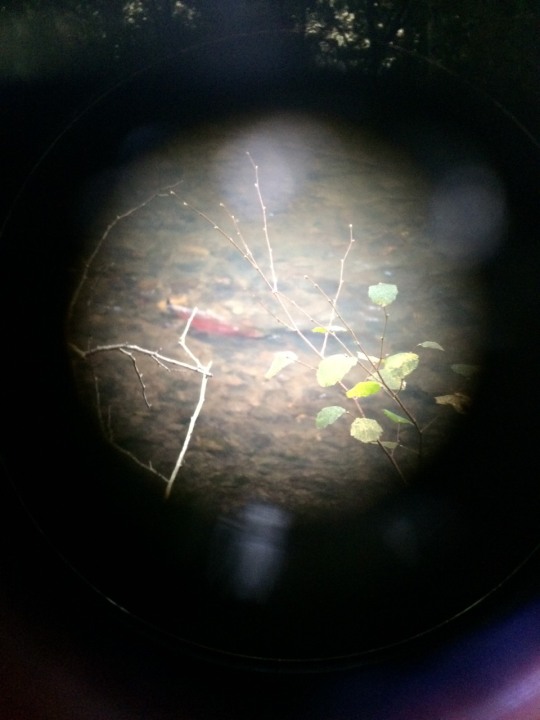
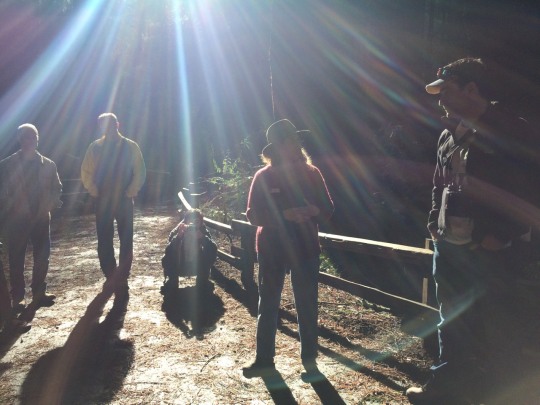


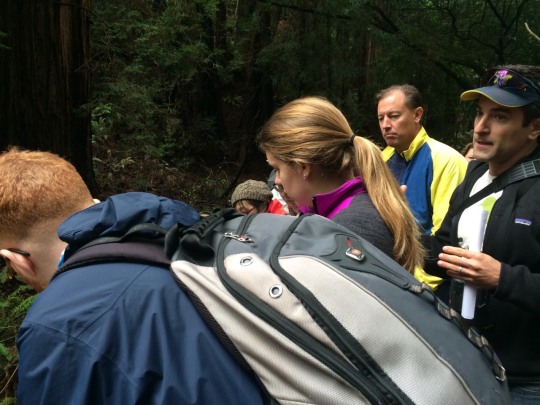

This is the first hike Simon and I did with Wild Equity, December 2013, we went to Muir Woods and then Lagunitas to find the Endangered Coho Salmon. The salmon have suffered from many changes to the river over time including the straightening of the river in the area, there are a lot less places for the baby fish to grow up. We didn't find any in Muir Woods but saw several of them actually mating in Lagunitas!
0 notes
Photo






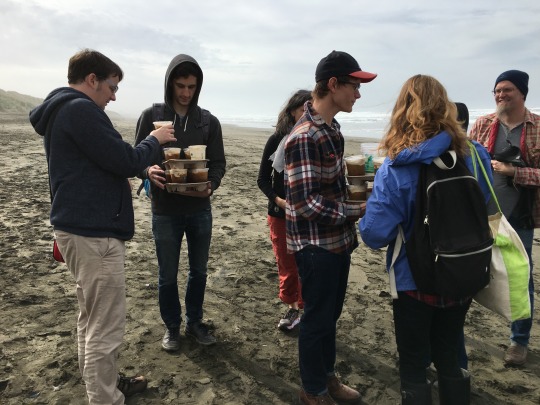
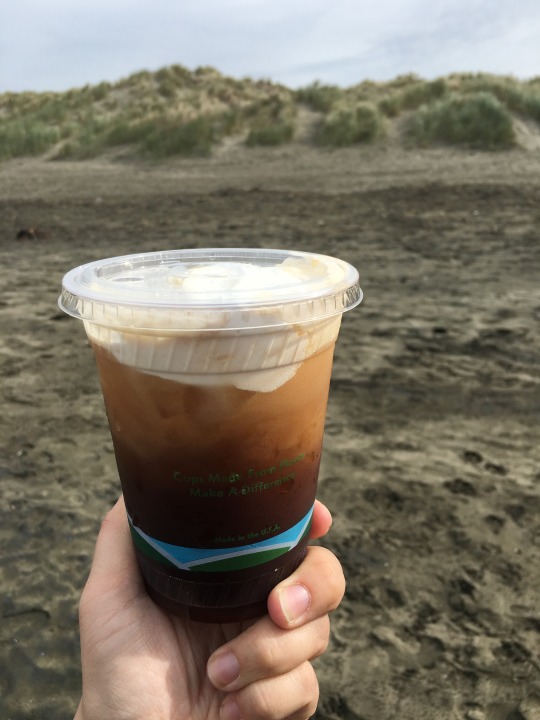


The endangered Western Snowy Plover struggles to survive on Ocean Beach, new dog leash proposal will give them a fighting chance!
Sunday before last, Simon and I joined Wild Equity on a walk along Ocean Beach in search of the Snowy Plover. We were joined by naturalist and renowned California birder, Dan Murphy, who helped us spot the difference between the endangered Snowy Plover and the common Sanderling.
The Western Snowy Plover is protected by federal law as a threatened species on the Endangered Species act, it lives amongst sand-dunes and on exposed beaches along the west coast of California, Oregon and Washington, though most of the breeding activity happens on the California coast, where in 2012 it’s habitat was listed as critical.
The Snowy Plover looks similar to the Sanderling, and looking about along the beaches near San Francisco you’d be forgiven for mistaking the two.
The Snowy Plover walks quite differently to the Sanderling’s scuttle. You see Sanderlings everywhere and they both have the white belly, Sanderlings have a longer beak and don’t have the tell-tell black markings on the head and near the eyes that the Snowy Plover does.

This year for the first time the population of the Western Snowy Plover has finally started to trend upwards from the 20 or so that have been struggling to survive over the past 20 years to a record 104 birds on Ocean Beach! Crissy Fields still has between 1 and 6 of these plucky little critters per season.
Even though the population in this area has risen a little this year, its still under huge threat, and the rise in this year’s population may be explained by habitat loss elsewhere in California driving the little fluffy birds to our neck of the woods.
Dogs are a massive threat to the Snowy Plover, particularly dogs off leash. Dogs happily scampering about the beach scares the birds that nestle amongst the windswept footsteps of the sand on Ocean Beach, and this can be too much disturbance for the fragile eggs and chicks to survive.
Another less obvious way dogs negatively affect the Snowy Plover - one birder told us on our walk along Ocean Beach - is through changing and destruction of the habitat. The Snowy Plover needs a gradual slope from the sea to the dunes, over time due to human / dog erosion that slope has become steeper and lost some of its natural dune plant-life. Loss of the natural slope and the plant coverage further drives the little birds to rest in the more exposed expanse of the beach.
The Golden Gate National Recreation Area has opened for comment a selection of proposals which have been in discussion for a long time, that could limit the exposure of the endangered wildlife to dogs. This graphic from the National Park service goes into more detail about how long these plans have been in the works.

It’s worth mentioning that it is not just the Snowy Plover that dog restrictions will benefit, The Golden Gate National Recreation Area is home to over 1,273 plant and animal species (37 of which are rare, threatened, or endangered).
I do sympathise with the opponents of the new proposal, however, we ourselves have an adorable little 13 month old puppy called Cleo, who likes nothing more than scampering about free on the beach and having a dig in the sand, and I can understand how it feels to think about the restrictions hampering the fun of our little fur-baby. However I am willing to take extra care when I take her out, to be sure that my time in nature with her doesn’t also negatively impact the environment we all so enjoy.
These new proposed restrictions are not about sanitising the beach or disregarding the feelings of the local people and their dogs, its about doing what’s right. Doing what little we can to co-exist peacefully in balance with the wildlife that needs us to fight for its very existence.
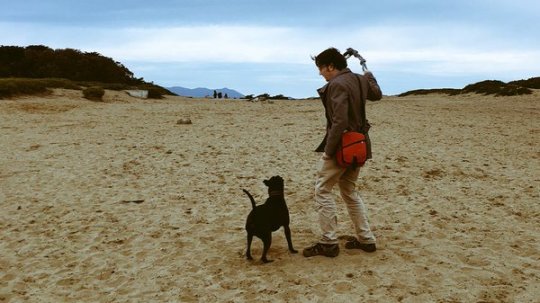
See the National Park Service FAQ or the Wild Equity FAQ for more information on the proposed new dog rules. There are a number of different alternatives for each area, see the pdf maps for more detail- and do look at these maps before jumping to the defensive.
To add your voice to the comments on this proposal to defend the many unique native plants and wildlife that exist in the Golden Gate National Recreation Area go to regulations.gov RIN 1024-AE16, the comment date has been extended to May this year (2016).
You can comment online at the link above or send a letter to: Superintendent, GGNRA, Attn: Dog Management Proposed Rule, Building 201 Fort Mason, SF, CA 94123.
Golden Gate National Recreation Area (GGNRA) Superintendent Chris Lehnertz says that they are “fighting really hard to be able to keep off-leash dog walking in the GGNRA. We’re the only location in the Park Service that allows it [at all]”.
Regardless of whether you think the various proposals are at the right level of balance between nature and recreation just yet, lets all think hard about both sides of this story to find the right solution.
Even if the new dog leash proposal goes through as is, you will still be able to have fun with your dog off leash, join us and our puppy Cleo in all the lovely dog play areas in and around the city.
We need to approach conservation of the natural world driven by whats responsible and just, and not purely from a place of gut-reaction and emotion. Think about the bigger picture, we owe the entire natural world our protection especially species like the Western Snowy Plover that are too far down the path to extinction.
Don’t sacrifice the future of an entire species, for the sake of the convenience of you and your pet.
1 note
·
View note
Text
Career change; Farewell Eventbrite, farewell Lanyrd
Those of you who know me personally will likely know that I have always been passionate about wildlife and the environment.
The News: I have decided to leave Eventbrite and Lanyrd. My plan is to use my technical and organisational skills to make a difference in environmental conservation.
Read on for some musings on the intersection of my career to date with my passion for environmental and wildlife conservation.
A lifelong interest
My new mission has been a fair while in the making. I have always been passionate about wildlife and the environment. I grew up in Devon, in a relatively rural village in the South West of England (think green rolling hills, cows and excellent cider).
My family nurtured my interest in nature from an early age, with lots of time outside and interacting with wildlife. We even used to volunteer together for the Devon Wildlife Trust on the Wild Weekends in Killerton Park. We helped supervise groups of 10 year olds on camping trips in the park, cooking over bonfires, organising activities and telling stories to introduce them to nature and the outdoors.
Volunteering with environmental action groups at university
At Bath University I studied Computer Information Systems, and while I was there I volunteered for a number of environmental action groups including Greenpeace and Friends of the Earth.
After I graduated in 2005, like many university students, I wasn’t really sure what to do with my degree. I didn’t really want to go into technology for technology’s sake. I wanted to make a difference.
Biodiversity, Beetles, lizards and dolphin rescue training
I moved back home to Devon and for about half a year I volunteered for the British Trust for Conservation Volunteers as a Volunteer Officer. I helped co-ordinate and supervise the weekend trips of local children with special needs to clear local paths and canal towpaths to restore the native habitats.
One of my favourite memories of that time was a week long conservation residential in Cornwall where I was one of the supervisors of a group of 12 teenagers.
We did various fun environmental action tasks such as clearing a graveyard of weeds, and counting and monitoring the populations of adorable dormice, butterflies and bats. I trained in Dolphin rescue(!!!) and did a fair amount of beach litter picking. The group also had lectures from a tree surgeon.
At this time I was also volunteering for the Devon Wildlife trust again as a researcher and assistant where I got to do all sorts of fun and important things like surveying the population of lizards, plants and grasses, beetles and butterflies as well as building and maintaining stiles and dry stone walls. Most of these conservation duties were for the Bovey Heathfield park in Devon.
This is a photo of me identifying flowers and grasses and analysing the age and biodiversity of the heath.
I wasn’t really using the skills I had learnt in my degree though and although I felt like I was doing valuable work I was having to start from scratch in a completely different field as I had no formal training in conservation.
Using technology to make a difference
In late 2005 I went to the first Rails and Django meetup in London where I met Tom Dyson. Tom ran Torchbox and convinced me that it was possible to use my technical skills and my university education to make a difference in the world.
Torchbox is a web development agency that does great work for charities and the public sector, and the office is based in a deer park in the Cotswolds. In their own words “We do great digital work with organisations that are making the world a better place”.
This was right up my alley. I got the job and moved to Oxford where I spent two years as a full stack developer, product manager and lead usability consultant working on all sorts of worthwhile projects including the Worldwide Fund for Nature (WWF), the Waste and Resources Action plan (WRAP), RecycleNow, the International Committee of the Red Cross (ICRC) the National Deaf Children’s Society (NDCS) and Rethink (this was all a while ago now so the sites have probably changed quite a bit since I worked on them).
Torchbox also built its own carbon calculator which I worked a bit on too. It was about this time that I started organising technical meetups and volunteering at conferences.
Persistence, letter writing and snail rescue
One day on a walk in the Cotswolds I nearly jumped out of my shoes when I saw this amazing snail! I named him Snaily.
Snaily was a member of the Roman snail family. On doing some extensive research I discovered that it was Britain’s largest snail, and a protected species in England facing destruction of habitat and the threat of poachers. Roman snails were possibly native to the UK but a lack of fossil evidence suggests they may have been introduced by the Romans for food.
There was due to be a car park extension built near where I found Snaily and his/her friends. As Roman snails only have a habitat of about 20-30m radius and as far as I could tell there were only 6 or so other known colonies in England I couldn’t let this happen.
I forget how many letters I wrote to politicians and local and national conservation groups to have them recognise this unrecorded colony and stop the carpark expansion. Thankfully it worked! The car park extension was not built and the signs advertising that it would take place were removed: Snaily was safe! for now.
Specialising in Frontend Development
I eventually left Torchbox and Oxfordshire to move to Clearleft in Brighton. Clearleft is a small user experience agency that punches well above it’s weight on an international level.
I worked at Clearleft as a Senior Frontend Engineer for several years where I improved my technical skills immeasurably and got to work on some cool projects, such as the redesign of WWF, redesign of the Mozilla addons site, and the redesign of organic veg box delivery service Riverford. (…again this was a while ago so the sites may have changed a bit since I worked on them)
WildlifeNearYou.com
During my time in Brighton we attended a number of Dev Forts, organised by friends of ours James and Norm. A bunch of us went to a napoleonic sea fort in the English Channel for a sort of hack-week with no planned agenda except to make a thing together.
Wildlife near you was an idea I had attempted to build in the past, but which became so much more as it was reborn and evolved over the week into a truly collaborative project between 12 people. The site encouraged you to create a trip report every time you visited a park, zoo or nature area, cataloguing the animals you saw and adding photos. We then used the data elsewhere on the site to power essential features like the ability to find your nearest owl!
Simon and I later built owlsnearyou.com which was even featured in Wired magazine and was one of the earliest apps on the web to use the HTML5 geolocation API.
After the fort Simon and I carried on developing the site for another year and a half. When we finally launched it we had learnt heaps about the importance not of waiting that long to launch! Launch early launch often was a lesson we internalised, as was remembering to take backups of your backups… sadly the site is no more.
Heading out into the sunset
Simon and I quit our jobs to get married and go travelling in 2010. The plan was to earn money from freelance work, travel overland as much as we could for three years and document conservation success stories and photograph endangered species around the world to help raise awareness.
(Photo credit below to Richard Rutter)
Our plan didn't exactly play out as intended but I like to think that serendipity makes everything work out alright in the end.
Food poisoning and accidentally starting a startup
Simon and I honeymooned overland for three months before we became sick from food poisoning in Casablanca. It was Ramadan and none of the restaurants were open during the day (Casablanca isn’t really on the tourist trail). We rented an apartment for a couple weeks to cook ourselves better, and launched Lanyrd, our on-the-road side project.
Read the full story in my blog entry here.
Lanyrd is a social directory of professional events. As an event organiser and someone who has made many friends and built my professional contacts and career through events it was a product I wanted to exist.
We never set out to be entrepreneurs, but Lanyrd took off faster than we could keep up with just the two of us so we joined Y Combinator, raised $1.4M from investors and hired a team of 6 over the course of three years. I was head of product and did all of the frontend development and design (until we hired for those roles), while also learning how to build and run a company - everything from investor negotiations to accounting to HR, PR, marketing, sales...
Lanyrd acquired by Eventbrite, moved to San Francisco
In August 2013 we closed the deal to sell Lanyrd to Eventbrite. The entire team and their families have since moved from London to San Francisco, where we've spent the past two years working on a whole range of exciting Eventbrite projects.
For about 8 months running up to the acquisition Simon and I were working nearly 20 hours a day, and not looking after ourselves at all. It takes a long while to come back from that!
I have now been worked at Eventbrite for nearly 3 years, firstly as Director of Organizer Acquisition and Growth, then as Director of Frontend Engineering. Its a great place to work and of course, always hiring (as are Clearleft and Torchbox) but the time became right for me to move on and after nearly 6 years in event technology to say goodbye to both Eventbrite and to Lanyrd.
Time to move on
My time at Lanyrd and then at Eventbrite helped me develop my organisational / management / technical / all sorts of skills significantly, and gave me time to think about what I really wanted to do with my life as well as what I enjoy and what is important to me.
Saying goodbye is hard, but I am taking my own advice to make the difficult decisions needed in order embrace serendipity and make my own luck.
What’s next?
Well, that is a story I look forward to unfolding, I am going it alone for a bit to see what happens. I have some visa stuff to work out first so I’ll be taking some time off to learn new things, work on interesting environmental / technical / creative projects, recuperate and volunteer as a Freelance Environmentalist (and no, I don’t really know what that means yet either).
Watch this space :)
I’d like to thank my wonderful husband Simon and all my lovely friends and family for the support in making this life change!
0 notes
Video
vimeo
Driving over the Golden Gate Bridge from natbat on Vimeo.
Periscope
0 notes
Photo
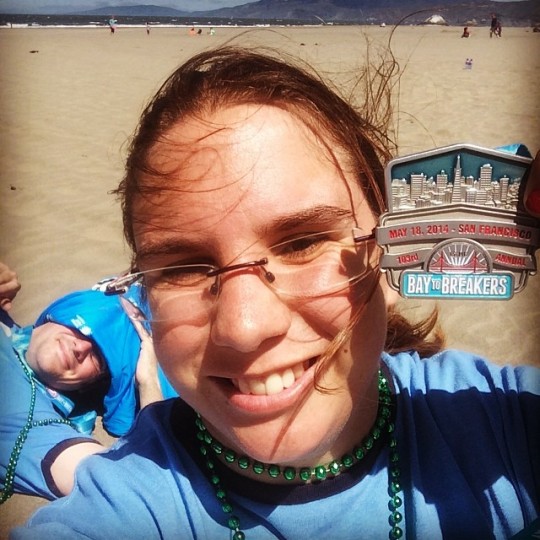
We finished! Ran/power-walked the 12k San Francisco #baytobreakers on (stupidly) no training!
2 notes
·
View notes
Photo

Me, Simon and an endangered blue iguana! (at Queen Elizabeth Botanical Gardens)
0 notes
Photo

Last UK driving lesson, drove 37k!
We did the duel carriageway twice at about 40mph which felt ever so fast!
There was also roundabouts, parallel parking, bikes and commuters, unexpected pedestrians, irrational honking from other cars, schools, tunnels, buses and a fire engine playing the bagpipes!
0 notes
